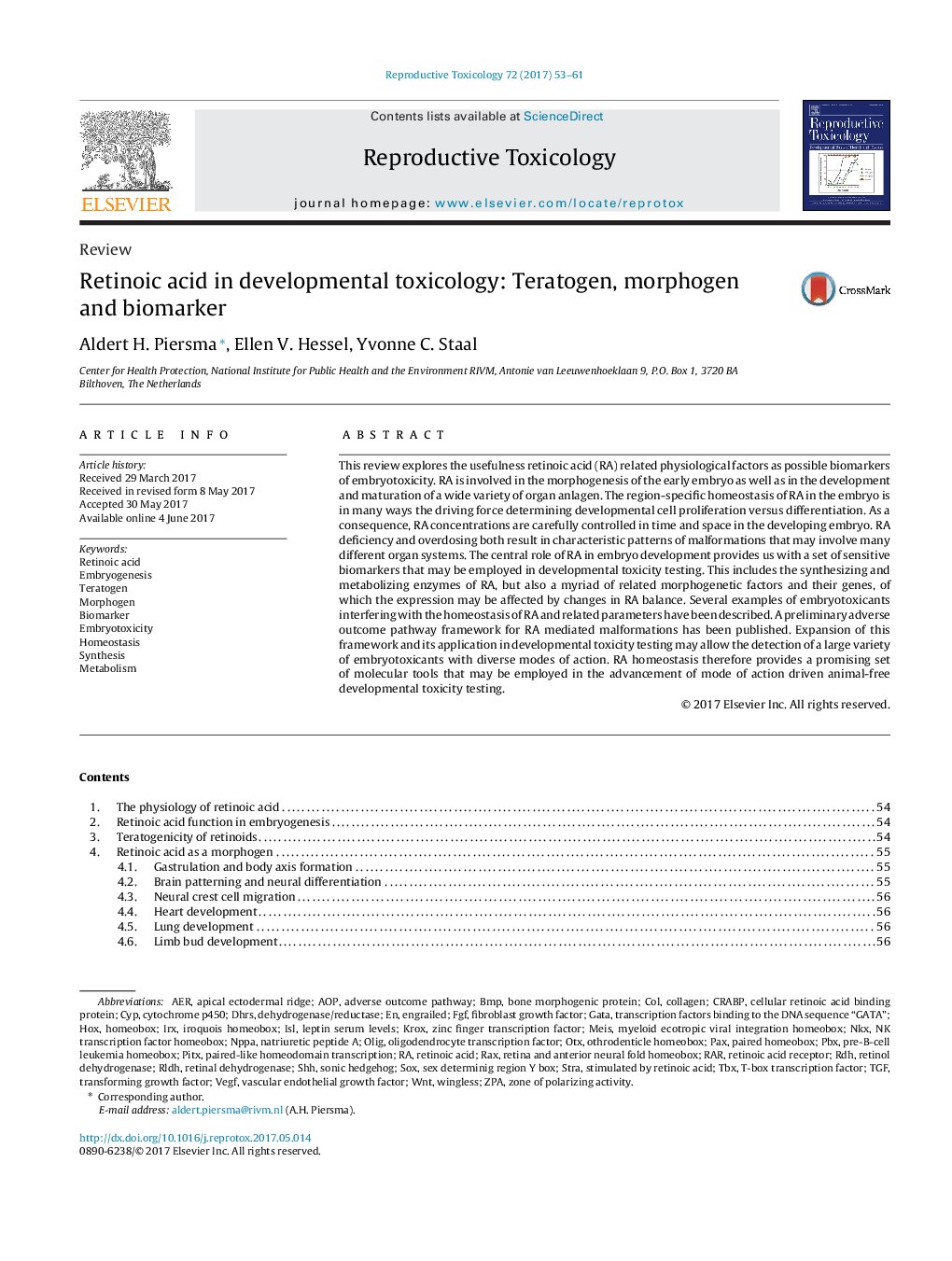| کد مقاله | کد نشریه | سال انتشار | مقاله انگلیسی | نسخه تمام متن |
|---|---|---|---|---|
| 5561540 | 1562147 | 2017 | 9 صفحه PDF | دانلود رایگان |
- This review makes the point of retinoic acid related factors being good candidate biomarkers of embryotoxicity in alternative test systems.
- We review addresses the various roles of retinoic acid in physiology and embryogenesis.
- Time- and location-dependent retinoic acid homeostasis is essential for normal embryogenesis.
- Dysmorphogenesis is often accompanied by modulation of retinoic acid related physiological factors.
- Retinoic acid related biomarkers can be employed in molecular computational approaches towards prediction of embryotoxicity by chemicals.
This review explores the usefulness retinoic acid (RA) related physiological factors as possible biomarkers of embryotoxicity. RA is involved in the morphogenesis of the early embryo as well as in the development and maturation of a wide variety of organ anlagen. The region-specific homeostasis of RA in the embryo is in many ways the driving force determining developmental cell proliferation versus differentiation. As a consequence, RA concentrations are carefully controlled in time and space in the developing embryo. RA deficiency and overdosing both result in characteristic patterns of malformations that may involve many different organ systems. The central role of RA in embryo development provides us with a set of sensitive biomarkers that may be employed in developmental toxicity testing. This includes the synthesizing and metabolizing enzymes of RA, but also a myriad of related morphogenetic factors and their genes, of which the expression may be affected by changes in RA balance. Several examples of embryotoxicants interfering with the homeostasis of RA and related parameters have been described. A preliminary adverse outcome pathway framework for RA mediated malformations has been published. Expansion of this framework and its application in developmental toxicity testing may allow the detection of a large variety of embryotoxicants with diverse modes of action. RA homeostasis therefore provides a promising set of molecular tools that may be employed in the advancement of mode of action driven animal-free developmental toxicity testing.
Journal: Reproductive Toxicology - Volume 72, September 2017, Pages 53-61
